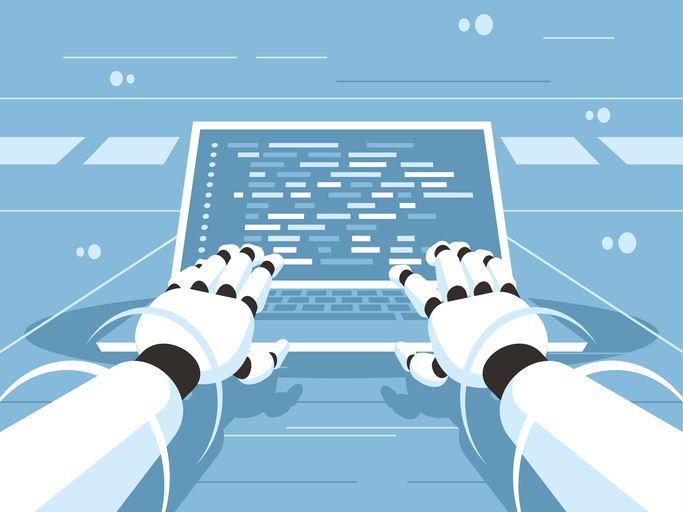In my Econometrics class that I teach to sixth-semester economics students at the University of Monterrey, I incorporated Artificial Intelligence (AI) tools into student empirical projects emphasizing academic integrity. The institution’s academic integrity standards are described in the syllabus of each course. They can be summarized as follows: do not copy information verbatim from other publications, credit the sources of citations, do not copy the work of other students, dispense with communication between teams and carry out your own work, and use AI tools only when authorized, specifying how it is used. In this article, I describe the results of a research activity carried out by students, with which I expect they can develop skills for solving practical problems and communicating results through an empirical project using AI.
“The students reinforced what they learned in class with the AI tools. They also managed to dispel their doubts, which would have been challenging to answer using traditional search tools. If we monitor the use of AI tools in class, I believe that students can act well when using artificial intelligence.”
AI Predictive Modeling Projects Emphasizing Academic Integrity
In economics, an empirical project entails producing research with observable and verifiable information. Three examples of empirical projects are 1) the evolution of pollution in Monterrey and Mexico City, Mexico, from 1990-2022; 2) co-movements in the price of steel and copper over time; and 3) predicting the share price of a particular company. This information can come from a database, a survey, or an experiment. Since the course involves time series, the data are observations of one or more variables over time; this information is helpful to study facts over a period, make predictions, and develop public policies in the short, medium, or long terms to solve a problem in a region or country.
The class project involved researching economics or finance topics, socio-demographics, or environmental issues in Mexico or any other country; the objective is to attempt to answer a question using actual data. The study was carried out in three stages following the general structure described by Wooldridge (2015).
- Phase 1. The topic is chosen, the problem to be solved is defined, and the research question is posed.
- Empirical stage (phases 2 and 3). Students use econometric software to program and clean databases, create variables, make statistics, estimate econometric models, or make predictions.
- Phase 3. Presentation of results.
The work was carried out in teams using the project-based learning methodology. Students applied knowledge and techniques learned during the semester, performing a practical project, communicating their progress with presentations, and presenting a results report at the end of the semester.
How do we use AI tools in empirical economics projects?
Since the course involves learning data processing, applying statistical and econometric techniques, model estimation, and predicting variables, the students must learn to program using econometric software. The course teaches Students how to program using specific software (Stata). Throughout the semester, they learn various programming codes that allow them to execute tasks such as graphing, performing descriptive statistics, estimating a model, and predicting variables. However, in the research process, students confront actual data and encounter challenges that require additional codes. Searching for programming codes using traditional search engines can take time and only sometimes results in finding the required information.
Those who have programmed using econometric software sometimes need help in these activities due to the data’s nature and the model’s choice to estimate or the variables to predict. Therefore, generative AI tools could mitigate these difficulties. IBM Education (2023) shows the benefits of using generative AI for programming. Observing this potential to address the problems raised, I suggest the following tools. Some are advantageous in searching for information, saving time, and producing content variety when editing and generating codes.
The tools proposed are:
- Elicit: It is an AI tool that can be used to search for scientific articles and analyze them. It can be used to review studies relevant to the topic of study.
- Perplexity: This is a chatbot that answers questions. It can search for information on specific topics, summarize, and produce programming codes.
- ChatGPT: Like Perplexity, it is an AI tool that can answer questions, generate text, and automate specific tasks.
- AIciclopedya: This is a directory of AI tools that suggest which can be used to suit the user’s needs.
Also, I allowed the students to use additional AI tools if they informed me.
To observe students’ adoption of generative AI with an emphasis on academic integrity, I designed a format to track the AI tools students used in my class (see Table 1). If they used generative AI, they had to complete the form when submitting the final manuscript.

In addition to the tracking format, I designed three educational materials to tell students what was expected in each deliverable and introduced artificial intelligence tools.
In the first educational material, I showed students how to pose a research question with and without the tools and how to search for a research topic. Using Perplexity AI, the students had to answer, “What can be investigated in Mexico using time series techniques?” The tool gave a series of results, and from there, the students oriented their search according to their interests.
In the second educational material, I presented students with an example of how to write the empirical project methodology. Additionally, to broaden their understanding, they used ChatGPT or Perplexity AI to write the method for an empirical project related to time series.
In the third educational material, I showed students how to search for and edit ChatGPT and Perplexity AI programming codes. It minimized search times and improved the information sought.
Results
Five of seven groups adopted different generative AI tools in at least one phase of the empirical project. Having adopted and used the tools, the students were open and simultaneously cautious at the end of the course. Some teams mentioned that although the tools were helpful, they had to maintain critical thinking regarding their use. Some teams said that searching for reliable information motivated them to use the tools.
Moreover, the artificial intelligence tools suggested some articles for the literature review that students could not find using traditional search tools. These suggestions led them to search for the articles in the university library databases where they study. The AI tools could motivate students to improve their information searches using reliable sources, thus elevating the quality of the literature review and the discussion of the results. However, some stated they could not access the articles suggested by the tools because “many papers were private,” so they had to look for them in the library. Concerning the programming codes, the students indicated that AI saved them time and resolved several of their concerns.
Below, I summarize some of the teams’ responses to the AI Tracking template.
Student Uses of the AI tools
“Perplexity was used to search for papers with topics like what we sought. In some cases, it only gave us the titles, and we completed the search in the library.”
“We used ChatGPT for the literature review. We asked it what elements it recommended that we address, although we ultimately modified its suggestion and adapted it to our project.”
“To know what the error codes that appeared in the software when we ran the commands meant.”
“To know what to include in a good introduction, literature review, and conclusion.”
“We used it to learn how to write a methodology for our work. Its responses guided us to present our work data in more orderly and describe the variables.”
“We asked the following questions: 1) How to write the methodology of an empirical project and 2) where can we get data on industrial production in Mexico and the USA?”
“The AI helped us understand the programming codes needed to build our work in Stata. For example, it showed us how to create a variable (Num) that allowed us to separate our variables into the two time periods we analyzed.”
Once I read the responses on the tracking forms and reviewed the projects, I could see the students’ transparent reporting of how they had used the tools; they even reported tools suggested by themselves. Tracking the use of generative AI tools in the classroom may reduce breaches of academic integrity. In the submitted projects, I detected no academic dishonesty; therefore, I believe students can act honestly using artificial intelligence. On the other hand, I noticed that students reinforce what they learn in class with AI tools; not being satisfied with the materials and guidance provided in the classroom, they leverage these tools to perfect what they have learned as a complement to classroom learning.
The quality of the information in the project presentation was relatively high. The students said they found new ways to graphically present the information in their data through AI tools, which improved the visual quality of the project. I also observed that they managed to solve problems during the project’s elaboration, acquiring this competency.
Using AI tools, students can resolve questions and concerns that would have been difficult to address with traditional search tools. The AI tools allowed them to improve the accuracy of the information and the statements made. Beyond the academic results, I perceived that the students had less anxiety about the search for programming codes because the tools allowed them to work in a particular way with their data. There was also a decrease in programming errors and search times.
Reflection
Adopting AI tools in the classroom presents us with many challenges, ranging from academic integrity to questions about data privacy and the veracity of information. Its incorporation in some subjects must go through the prior reflection of the teaching staff, weighing the risks and the benefits of its adoption. Introducing and implementing AI tools in student empirical projects in one of my courses was not an easy decision; however, after analyzing how I could incorporate them while minimizing the likelihood of academic dishonesty and taking a formative approach to integrity, I decided that the students could adopt them as an option.
The narrated experience has limitations; there are opportunities for improvement in its incorporation and inherent risks to using generative AI tools. The statements given in this article are particular and refer to a single experience with the format and educational materials created exclusively for the empirical project described above. We must continue researching AI learning practices and systematically weigh their challenges and benefits. I invite seeking protocols that allow us to face the challenges of implementing generative AI in the classroom.
About the Author
Rosa María Morales Valera (rosa.moralesv@udem.edu) is an academician at the Business School of the University of Monterrey (UDEM), Ph.D. in Economics from Claremont Graduate University (California, USA), and a member of the National System of Researchers (SNI) of Mexico. The author is a member of the Honorary Council of UDEM.
References
Currie, G. M. (2023, May). Academic integrity and artificial intelligence: is ChatGPT hype, hero, or heresy? In Seminars in Nuclear Medicine. WB Saunders. https://doi.org/10.1053/j.semnuclmed.2023.04.00
IBM Education (2023). AI code-generation software: What it is and how it works. https://www.ibm.com/blog/ai-code-generation/
Moya, B., Eaton, S. E., Pethrick, H., Hayden, K. A., Brennan, R., Wiens, J., McDermott, B., & Lesage, J. (2023). Academic Integrity and Artificial Intelligence in Higher Education Contexts: A Rapid Scoping Review Protocol. Canadian Perspectives on Academic Integrity, 5(2), 59–75. https://journalhosting.ucalgary.ca/index.php/ai/article/view/75990.
Ta, R & D. West. (2023) Should schools ban or integrate generative AI in the classroom? The Brooking Institution. https://www.brookings.edu/articles/should-schools-ban-or-integrate-generative-ai-in-the-classroom/
Wooldridge, J. M. (2015). Introductory Econometrics: A Modern Approach. 6th ed.
Editing
Edited by Rubí Román (rubi.roman@tec.mx) – Editor of the Edu bits articles and producer of The Observatory webinars- “Learning that inspires” – Observatory of the Institute for the Future of Education at Tec de Monterrey.
Translation
Daniel Wetta
This article from Observatory of the Institute for the Future of Education may be shared under the terms of the license CC BY-NC-SA 4.0 
)
)


)